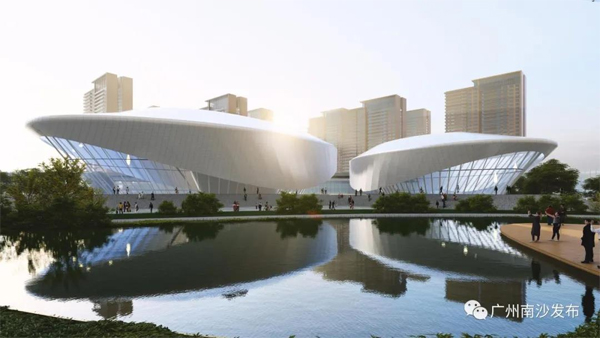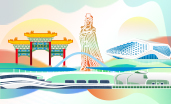Nansha gets ready to build a science city
Scientific and technological innovation work in Guangzhou's Nansha district was outlined at a press conference on Feb 20, alongside details of the district's efforts to build the Nansha Science City.
A "1+1+3+N" scientific and technological innovation platform system has been established in Nansha, said Xie Ming, executive deputy head of the district.
The first "1" refers to taking Nansha Science City and the Guangzhou Pearl Science Park as key projects, and the second "1" appertains to making the Southern Marine Science and Engineering Guangdong Laboratory (Guangzhou) the district's main force of original innovation. The "3" refers to three major scientific and technological sites serving as strategic support for frontier research, while the "N" means several high-level research institutes for technology supply.
The growth rate of the regional gross domestic product of Nansha has been the highest in Guangzhou for two consecutive years according to Xie, which has accelerated the gathering of innovative elements in the district.
The Southern Marine Science and Engineering Guangdong Laboratory (Guangzhou) currently has a total of 16 academician teams, while the only international IPv6 root server in South China has been built and put into operation in Nansha.
Nansha has been improving its industrial system and its talent service system, said Xie. A strategic emerging industrial system has taken shape, characterized by marine equipment, automobile manufacturing, artificial intelligence, and biomedicine. A total of 530 million yuan ($81.98 million) of awards were granted to talents in the district in 2020, with the number of high-level talents increasing to 11,429.
According to Xie, Nansha Science City will have a planning area of 99 square kilometers and be built into the supporting region of the comprehensive national science center in the Guangdong-Hong Kong-Macao Greater Bay Area.

The design sketch of the Guangzhou campus of the University of Chinese Academy of Sciences. [Photo/gznsnews.com.cn]
Nansha will advance the construction of the Nansha Science City in three aspects: high-end science and innovation resource gathering, high-level planning and construction, and high-standard policy support, Xie noted.
Over 10 key projects related to the Chinese Academy of Sciences (CAS) have already started construction, include the Guangzhou campus of the University of CAS, the CAS Guangzhou branch, and the CAS South China Sea Institute of Oceanology.
The conceptual scheme design of the core area of the Nansha Science City - Guangzhou Pearl Science Park - will be created following an international competition, said Xie. By 2023, the start-up area of the science park is scheduled to be basically complete and put into use.
The implementation plan for turning Nansha into an international talent special district, the first of its kind in China, was recently launched by the Guangdong Provincial Government, with the release of several talent innovation policies.
In addition, Nansha introduced 16 special policies for the comprehensive national science center in the Greater Bay Area. It gives more support to the construction of innovation platforms, the application of scientific and technological achievements, and the cultivation of high-tech enterprises. A fund of up to 200 million yuan will be given to support a single high-end innovation platform.
All rights reserved. Presented by China Daily









